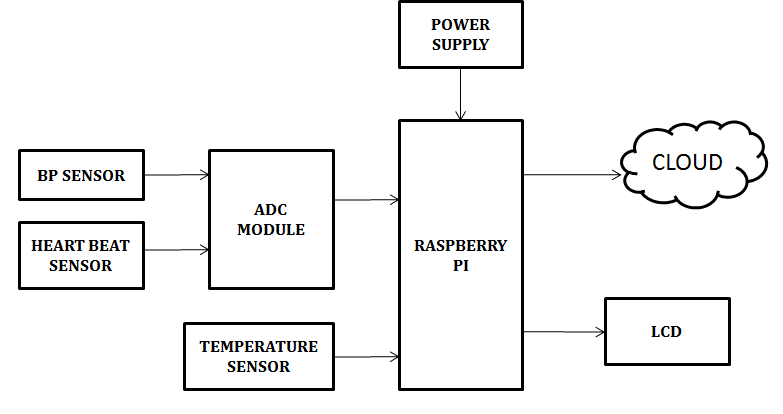Medical Remote Monitoring of Multiple Physiological Parameters Based on Wireless Embedded Internet
Objective
In view of the current situation, that physiological parameter monitoring systems can only achieve local monitoring, and the multi-physiological parameter monitors are large, expensive, and disadvantageous to remote monitoring. The main objective of this system is to monitor the health condition of patients from anywhere.
Abstract
The advancement and application of Wireless Body Area Networks (WBANs) are considered key research areas for improving healthcare quality. Pervasive healthcare monitoring provides rich contextual information to handle the odd conditions of chronically ill patients. Constant monitoring and an early medical response not only increase the life quality of elderly and chronically ill people but also help families and parents by providing high-quality health care to their young babies and paralyzed children. The importance of the WBANs cannot be very promising, as many applications and prototypes are already in progress. For example, some WBANs are dedicated to continuous observation of cognitive diseases such as Alzheimer’s, epilepsy, and Parkinson’s disease. Another significant advancement in WBANs is the formation of tiny sensors implanted in the human body or integrated into fabric. While the importance of WBANs in healthcare is indubitable, the amount of data generated by these sensors is huge and demands more resources in terms of computation, memory, communication power, massive storage infrastructure, energy-efficient performance for processing, real-time monitoring, and data analysis.
This system will update the health parameter readings of a patient to a third party server where doctor can view if any parameter is about is about to cross its limit. So that he can take an immediate action towards the patient.
Keywords: Raspberry pi, heartbeat sensor, temperature sensor, 16x2 LCD, IOT.
NOTE: Without the concern of our team, please don't submit to the college. This Abstract varies based on student requirements.
Block Diagram

Specifications
Hardware Requirements:
- Raspberry Pi
- Micro SD card
- 5V Adapter
- USB cable
- Heart beat sensor
- Temperature sensor
- BP sensor
- ADC Module
- 16x2 LCD
- Power supply
- Connecting wires
Software Requirements:
- NOOBS software
- VNC Viewer
- Python3 IDLE
- Fritzing
- Third Party server
Learning Outcomes
- Raspberry Pi Pin diagram and Architecture
- How to install python IDE Software
- Setting up and Installation procedures for Raspberry Pi
- Introduction to python IDE
- Commands in python
- How to install Libraries?
- Basic coding in python
- Working of temperature sensor
- How to interface temperature sensor with Raspberry Pi?
- Working of BP Sensor
- How to interface BP Sensor with Raspberry Pi?
- Working of Heart Beat Sensor
- How to interface Heart Beat Sensor with Raspberry Pi?
- Working of ADC Module
- How to interface ADC Module with Raspberry Pi?
- Working of LCD
- How to interface LCD with Raspberry Pi?
- About Project Development Life Cycle:
- Planning and Requirement Gathering(( software’s, Tools, Hardware components, etc.,)
- Schematic preparation
- Code development and debugging
- Hardware development and debugging
- Development of the Project and Output testing
- Practical exposure to:
- Hardware and software tools.
- Solution providing for real time problems.
- Working with team/ individual.
- Work on Creative ideas.
- Project development Skills
- Problem analyzing skills
- Problem solving skills
- Creativity and imaginary skills
- Programming skills
- Deployment
- Testing skills
- Debugging skills
- Project presentation skills
- Thesis writing skills





 Paper Publishing
Paper Publishing
